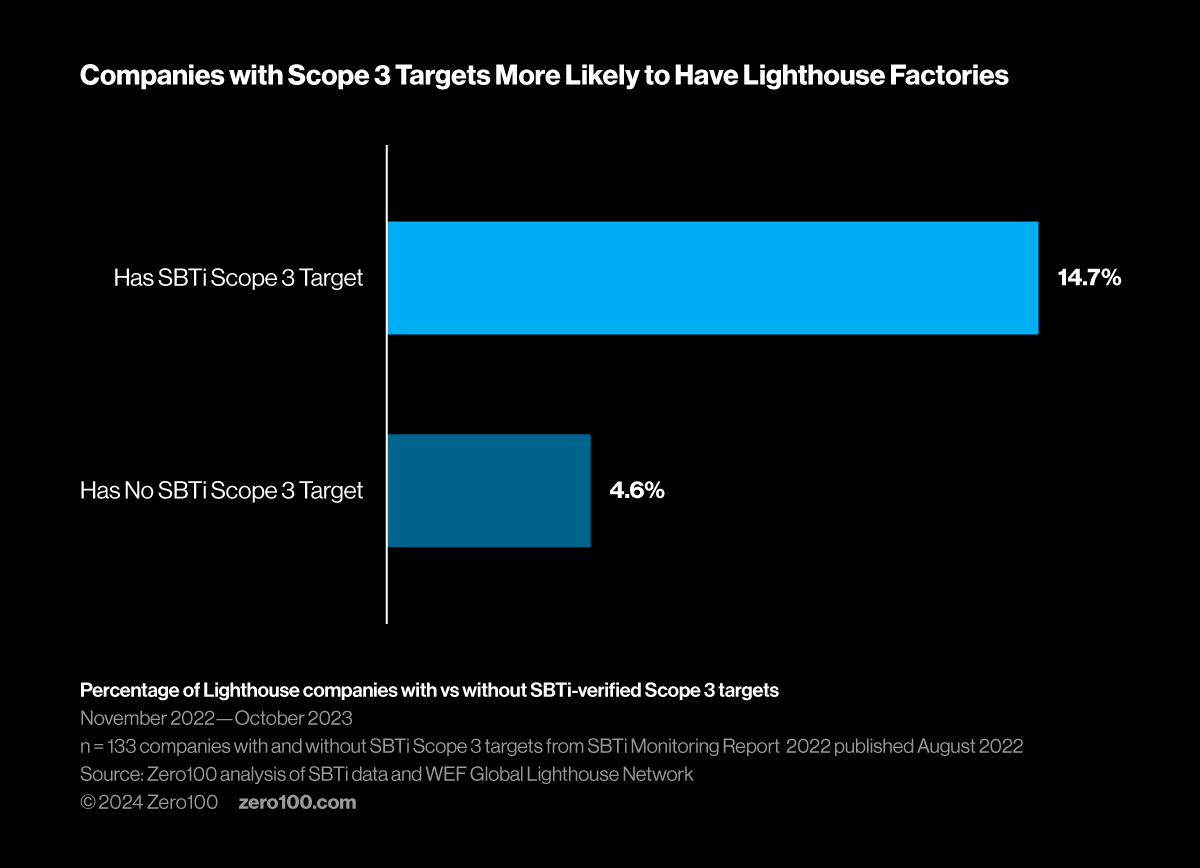

Global Lighthouse Network: An Avenue Toward Net Zero
Lighthouses see an increase in value across a set of KPIs, including sustainability and productivity but also agility, speed to market, lower lot sizes, on-time delivery, and customization. To avoid “pilot purgatory” and see real progress, members of the Global Lighthouse Network design for scale from day one.
Key Takeaways
-
1
Companies with SBTi Scope 3 targets are 3.2x more likely than those without to be a part of the Global Lighthouse Network.
-
2
15% of companies with SBTi Scope 3 targets also have at least one factory that qualifies as a Lighthouse factory. Within our data set, Johnson & Johnson has the most qualifying factories (13).
Through the adoption of Fourth Industrial Revolution (4IR) technology, The Global Lighthouse Network (GLN) strives to promote improvements in productivity, growth, and sustainability. Initially launched in 2018 by WEF and McKinsey, the community of forward-thinking organizations has grown from 16 to 153 4IR Lighthouses, each qualifying for at least one of the three lighthouse classifications: Factory/Manufacturing, End-to-End Value Chain, and Sustainability. The Sustainability Lighthouse, introduced in 2021, was created to recognize leaders who have achieved a high level of eco-efficiency through optimizing resource usage, reducing GHG emissions through cleaner production methods and energy-efficient practices, and minimizing waste through process control and recycling initiatives. Out of the 153 Lighthouses that exist today, 17 are Sustainability Lighthouses.
Of the 14.7% of companies in our data set with Scope 3 SBTi targets that have Lighthouse factories, Johnson & Johnson has the most, with 13 total factories located across Europe, Latin America, Asia, and the USA, with at least one of each type – Factory, E2E, Sustainability – in each region. Companies like J&J, Cummins, and Unilever, among others, have embraced an AI-powered, robot-led 4IR transformation. While a big investment, Lighthouses across all classifications see an increase in value across a set of KPIs, including not only sustainability and productivity but also agility, speed to market, lower lot sizes, on-time delivery, and customization.
To reach its pledge of carbon neutrality by 2030, J&J subsidiary Janssen Sciences Ireland Unlimited Companies has implemented advanced technology, including 4IR-enabled real-time release and adaptive process control in their Cork, Ireland Sustainable Lighthouse factory. As a result, they’ve reduced carbon emissions per kg of product by 56% while simultaneously expanding their site footprint by 34%. The pharma giant has established itself as a digital leader, implementing a range of AI solutions in almost all functional areas of their supply chains (within our AI Use Case Library, we have tracked J&J’s implementations of genAI, ML, RPA, and Machine Vision solutions across The Loop), and are actively investing in and recruiting AI talent.

One of the biggest challenges companies face when looking to incorporate new tech into their operations is scaling across production networks. According to the GLN, 70% of companies are still stuck in “pilot purgatory,” caused by the time lag between the idea of digital value delivery and the reality of implementing, optimizing, and scaling. The GLN is focused on tackling this issue and is seeing positive progress, with 82% of their members (as of a 2022 WEF report) targeting transformation of entire factories vs individual use cases as the “pilot” – designing for scale from day one. In a recent webinar on digital transformation, Zero100 VP Research Steve Hochman discussed how business leaders face a tension between launching more controllable, top-down projects vs complex, wider-scale experimentation. The latter, with the right process and org design, allows for maximum creativity across teams and, ultimately, long-lasting, well-integrated tech solutions.
If you’re already working towards achieving these digital milestones across your supply chain operations, consider applying to become a Lighthouse. Joining the community of pioneers pushing each other to embrace cutting-edge tech – at scale – will allow you to see the initiatives you are already investing in kick into high gear and will inspire you to discover new solutions you may not have thought of.
To become a Lighthouse, companies must be able to show the industry transformation they have achieved through step-change innovation, integrated use cases, best practice enablers, and scalable 4IR technology platforms. Qualifying companies must demonstrate an intent to have a sustainability impact on multiple environmental categories via clear pledges and step-change improvements from the company at scale. Starting in May 2024, companies can apply online by nominating a potential Lighthouse factory, and, if selected, the GLN team will conduct a site visit, materials will be reviewed by an independent panel of experts from academia, industry, and technology, and a decision will be made.
To see a different data cut or to dig deeper into this topic, reach out to our Head of Research Analytics, Cody Stack, at Cody.Stack@zero100.com.
Methodology
Zero100’s proprietary data and analytics are a combined effort between our data scientists and research analysts. We provide data-first insights matched with our own research-backed points of view and bring this analysis to life via real-world case examples being led by supply chain practitioners today.
For this study, we analyzed SBTi data from 132 B2B and B2C companies. We cross-checked the Global Lighthouse Network’s list of 153 Lighthouses with the 67 companies that have SBTi Scope 3 targets.